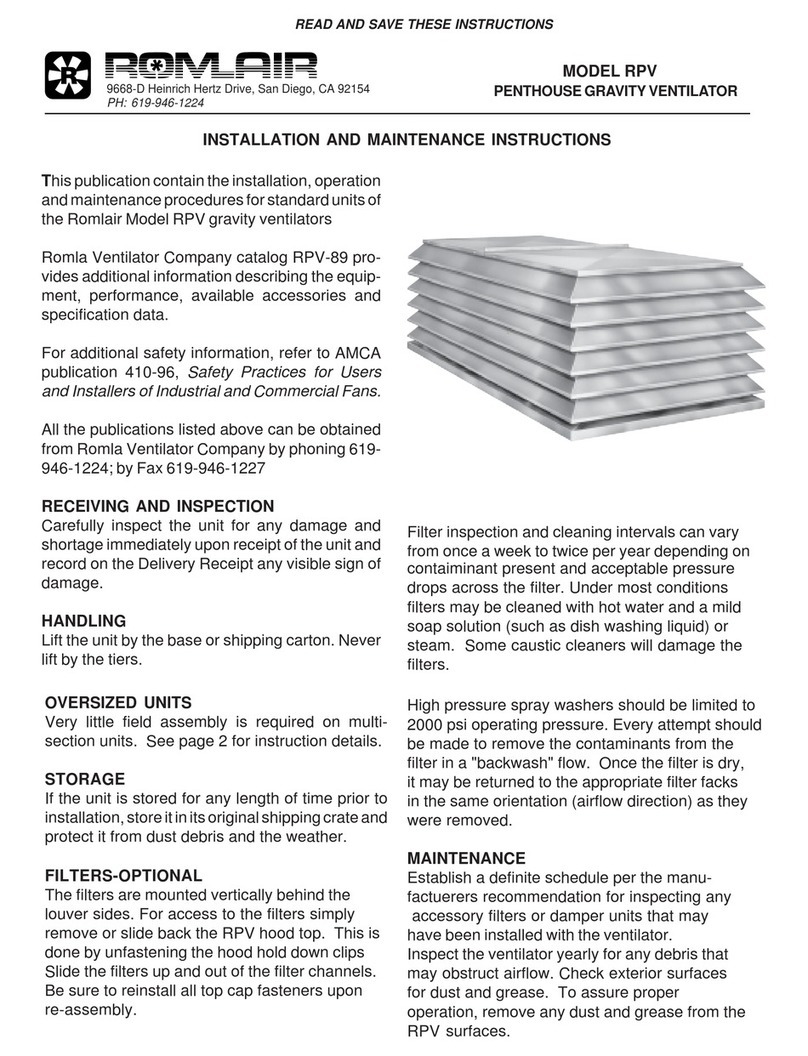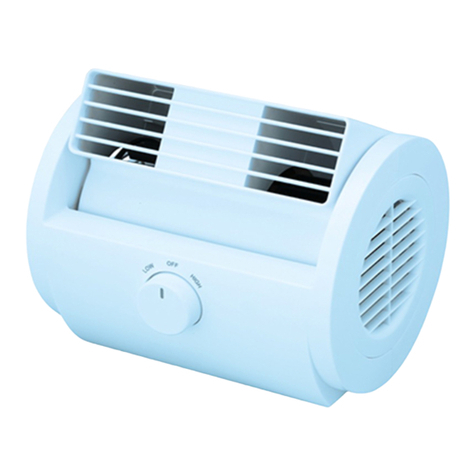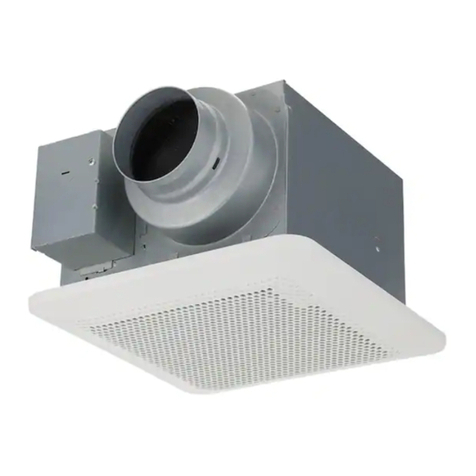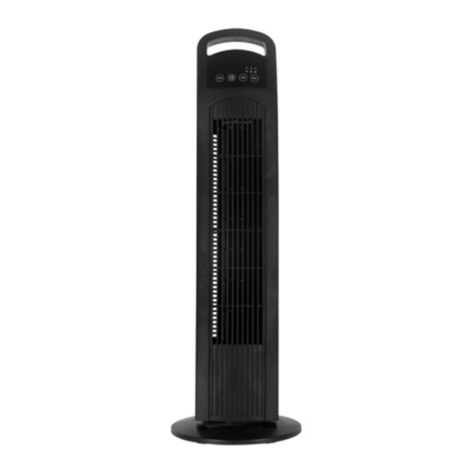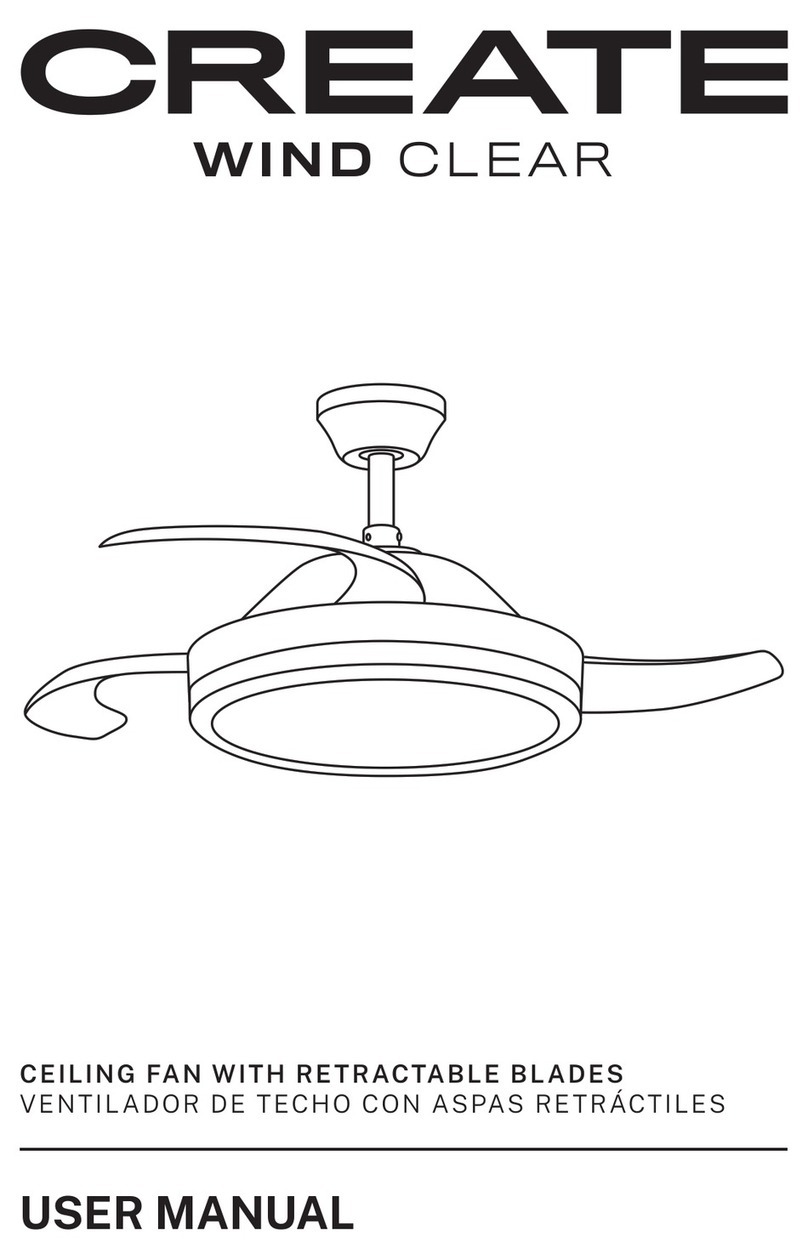Romlair CLS User manual

INSTALLATION AND MAINTENANCE INSTRUCTIONS
MODEL CLS
Centrifugal Filtered Supply Fans
READ AND SAVE THESE INSTRUCTIONS
9668 Heinrich Hertz Dr # D, San Diego, CA 92154
PH. 619-946-1224
This publication contains the installation, opera-
tion and maintenance instructions for standard
units of the CLS- Centrifugal Filtered Supply
Fans. Carefully read this publication prior to any
installation or maintenance procedure.
The Romlair catalog, CLS, provides additional
information describing the equipment, fan perfor-
mance, and available accessories.
For additional safety information, refer to AMCA
publication 410-96, Safety Practices for Users and
Installers of Industrial and Commercial Fans.
Receiving and Inspection
Inspect the fan and accessories for any damage and
shortage immediately upon receipt of the fan.
• Rotate the blower wheel by hand to ensure it turns
freely. If necessary, shift wheel position and re
tighten.
• Inspect dampers (dampers are optional), for good
operation.
Handling
Lifting Lugs are installed on the base to facilitate
lifting. Never lift by the louver tiers.
WARNING
This unit has rotating parts. Safety precautions
should be exercised at all times during installation,
operation, and maintenance.
ALWAYS DISCONNECT POWER PRIOR TO WORKING
ON FAN.
Storage
Any time the fan is stored for a lenth of time prior to
installation, fill the bearings with grease or moisture-
inhibiting oil. The blower wheel should be rotated
every three to five days to keep a coating of grease
on all internal bearing parts.
The fan should be stored in its original crate and
protected from dust, debris and the weather.
Personal Safety
Disconnect switches are recommended. Place the
disconnect switch near the fan in order that the
power can be cut off quickly in case of an emergency,
and in order that maintenance personnel are provided
complete control of the power source.
Installation
Motor Installation
Most units come with the motors, belts, and drives
installed. No installation of motor and drives are
required.
Duct Installation
Good fan performance requires proper installation of
inlet and discharge ducts. The fan should conform to
the following guidelines.
Free Discharge
Free Discharge
A free discharge into the plenum should be avoided.
Free discharge into the plenum does not allow for a
static regain, resulting in loss efficiency.

Discharge Duct Turns
It is good pratice to allow 3 duct diameters between
duct turns or elbows and the fan outlet. Refer to the
following drawing.
Wheel-to-Inlet Clearance
Wheel-to-inlet clearance is very important for optimal
fan performance. This clearance should be checked
before initial start-up. Handling during shipping can
cause a shift in these components. Reference the
below table for correct wheel overlap.
The overlap can be adjusted by loosening the wheel
hub and moving the wheel until you obtain the correct
overlap.
A uniform radial gap between the edge of the wheel
shroud and the edge of the inlet cone is obtained by
loosening the inlet cone bolts and repositioning the
inlet cone.
SLC
EZIS PALREVO
001526.
021526.
531526.
051526.
561526.
081526.
591526.
01257.
52257.
54257.
07257.
0030.1
0330.1
5630.1
Wiring Diagrams
Wiring diagrams are located on the motor nameplate.
If a hard copy is required please contact the factory.
Wiring Installation
All wiring should be in accordance with local ordi-
nances and the National Electrical Code, NFPA70.
Verify that the voltage, frequency, and current carrying
capacity of wires is in accordance with the motor
nameplate.
Lock off all power sources before unit is wired to
power source.
It is important to allow enough slack in the wiring to
allow for motor movement when adjusting belt
tension.
Personal Safety
Disconnect switches are recommended. The dis
connect switch should be near the blower in
order that the power can be quickly cut off in
case of an emergency, and in order that
maintenance personnel are able to control the
power source
Follow the wiring diagram provided with the
motor and the disconnect switch. Correctly label
the circuit on the main power box and always
identify a closed switch to promote safety.

Wheel Rotation
Test the fan to observe the rotation of the blower
wheel and to ensure the rotation is the same as
indicated by the direction arrow.
On 3 phase motors, If the wheel is rotating in the
wrong direction, reverse rotation by switiching two of
the supply leads. For this reason, the rotation of the
fan cannot be restricted to one direction at the factory.
115v and 230v single phase motor are set correctly at
the factory. Changing the rotation of these motors
should only be attempted by a qualified electrician.
If you allow the fan to operate in the wrong
direction, the motor will overheat and cause
serious damage. On 3-phase motors, if the fan is
operating in the wrong direction, check the
control switch. You may be able to interchange
two leads at this location so that the fan is operat-
ing in the correct rotation.
Airfoil
Belt and Pulley Installation
Proper belt tension is important. If the belt tension is
too tight or too loose, lost efficiency and possible
damage is possible.
It is important not to change the pulley pitch diameter
to change tension. This will change the fan speed and
performance.
Adjusting Belt Tension
1. Loosen the adjustment bolts on the adjustable
motor plate. Position the motor so that the belts easily
slip into the pulley grooves. Avoid prying, rolling or
forcing the belts over the rim of the pulley.
2. Adjust the motor until belts appear snug. Run the
unit for a few minutes and allow the belts to “Set”
properly. As shown below, a deflection of approxi-
mately 1/4” per foot of center distance whould be
obtained by firmly pressing the belt.
3. Tighten securely the motor base nuts.
4. Verify that the pulleys are correctly aligned.
Pulley Alignment
The drawing below illustrates correct pulley align-
ment. Align fan and motor sheaves with a straight-
edge or string and tighten.
Proper Sheave Alignment
Proper Wheel Rotation
Rotation is always determined by viewing the wheel from
the drive side and should correspond to the rotation decal
affixed to the unit.
Final Installation Steps
• All fasteners and setscrews should be inspected
and tightened. Refer to the recommended torque
tables below.
• Verify all voltage with voltmeter.
swercsteSroFeuqroTdednemmoceR
eziS
xeHyeK
ssorcA
stalF
niM
.xaM
01.oN"23/38233
"4/1"8/16608
"61/5"23/5621651
"8/3"61/3822572
"61/7"23/7843483
"2/1"4/1405006
"8/5"61/540110021
"4/3"8/304410081
dloHroFeuqroTdednemmoceR
stloBnwoD
eziS hcnerW
euqroT
61-"8/3042
31-"2/1006
11-"8/50021
01-"4/30012
9-"8/70402
8-"10003
7-"8/1-10024
7-"4/1-10006

Pre- Start Up
1. Disconnect and lock-out all power switches to fan.
See warning below.
2. Check all fasteners, set screws and locking collars
on the fan, bearings, drive, motor base and access-
ories for tightness.
3. Inspect the V-belt drive for proper alignment and
tension.
4. Check all electrical connections.
5. Check housing and ductwork for obstructions and
foreign material that may damage the fan wheel.
6. Check wheel-to-inlet clearances for maximum
performance
7. Restore power to fan.
WARNING
This unit has rotating parts. Safety precautions
should be exercised at all times during installation,
operation, and maintenance.
ALWAYS DISCONNECT POWER PRIOR TO WORKING
ON FAN.
Start Up
Start the fan and inspect the following:
• Rotation.
• Excessive vibration.
• Unusual noise.
• Bearing noise.
• Improper belt alignment or tension.
• Incorrect motor amperage or voltage.
Immediately shut the fan down if a problem is
discovered. Lock out all electrical power and check
for cause of the trouble.
Filters and Filter Care
Filters must be cleaned regularly to prevent undue
resistance and a loss of filtering efficiency. Visual
inspection at regular intervals is probably the best
method for determing when it is time to clean and
change filters. These filters can be easily removed by
unbolting and removing the louver section hood, and
sliding the filters out.
Remove excess dust and lint by rapping dirty side
down. Clean filters by flushing with a stream of water
from both the exhaust and intake side. If filters are
extremely dirty or linted, fill container with warm water
and a mild soap solution, and “swish” filters in water.
Rinse clean and allow to dry.
Replacement Filters.
Aluminum replacement filters can be supplied by
factory if required. The filter sizes for each size are
listed in the following table.
TINU
EZIS )KCIHT"2(EZISRETLIFLANIMON
2102X02)4(02X61)4(
3102X02)8(
5152X02)8(
6152X02)8(
8152X61)4(52X02)8(
0252X61)4(52X02)8(
2252X61)4(52X02)8(
4202X02)21(02X61)21(
7252X02)21(52X61)21(
0352X02)42(
3352X02)61(02X02)61(
6352X61)4(52X02)61(02X02)61(
Lubricants
The factory uses a high quality lithium base grease
conforming to NLGI Grade 2 consistency, such as
those listed below.
MOBILITH SHC 220
MOBILITH AW2
TEXACO MULTIFAK AFB2
TEXACO PREMIUM RB
SHELL ALVANIA #2
EXXON UNIREX N2
Never mix grease made with different bases. This will
cause a breakdown of the grease and possible failure of
the bearing.
Motor Bearings
Motor maintenance is generally limited to cleaning and
lubrication. Cleaning should be limited to exterior surfaces
only. Removing dust and grease buildup on the motor
housing assists proper motor cooling. Never wash-down
motor with high pressure spray. Greasing of motors is only
intended when fittings are provided. Many motors are
permanently lubricated for life and require no further
lubrication. Under normal conditions they will not require
further maintrenance for a period of ten years. Motors
supplied with grease fitting should be greased in accor-
dance with manufacturer’s recommendations.
Routine Maintenance
Once the unit has been put into operation, a routine
maintenance schedule should be set up to do the
following.
1. Periodic lubrication of bearings and motor.
2. Wheel, housing, bolts and set screws on the entire
fan should be checked for tightness.
3. Any dirt accumulation on the wheel or in the
housing should be removed to prevent unbalance
and possible damage.
4. Springs and rubber isolators should be inspected
for deterioration and replaced if required.
5. Inspect blower wheel and hosuing looking for

Bearing Lubrication
The most common cause of premature bearing failure
is improper lubrication.Greasable fan bearings are
lubricated through a grease fitting on the bearing and
should be lubricated by the guidelines recommended
by the following relubrication schedule.
*)SHTNOM(ELUDEHCSNOITACIRBULER
skcolBwolliPgniraeBllaB
)MPR(DEEPS00500010051000200520003005300040054
RETEMAIDTFAHS
"61/11-1urht"2/1
"61/3-2urht"61/51-1
"61/51-2urht"61/11-2
"61/51-3urht"61/7-3
litnu,stimrepytefasfI.gninnurelihwetacirbuler-lavretnignisaerglaitinidetsegguS*
ronoitidnocnognidnepedycneuqerfnoitacirbultsujdA.slaestasruccognigrupemos
tceffalliwsnoitidnocgnidnuorrusdna,erutarepmet,oitarepofosruoH.esaergdegrup
.deriuqerycneuqerfnoitacirbulereht
Puddle corrosion is often encountered in failed
bearing, particularly if the fan has been shut down for
a period of time. Moisture caused by condensation
will accumulate in the bearings and create corrosion
in the race ways. If fans are to be shut down or stored
for more than 30 days it is important that the bearings
are filled with grease and the fan rotated by hand
from time to time so that the grease can be spread on
bearing components. All bearings are filled with
grease before leaving the factory. When the fans are
started, the bearings may discharge excess grease
through the seals after a short period of operation, but
do not replace this initial discharge because leakage
will cease when the excess grease has worked out.
Sometimes the bearing has a tendency to run hotter
during this period and one should not get alarmed
unless it lasts over 48 hours or gets very hot. When
relubricating use sufficient amount of grease to purge
the seals. For best results, lubricate the bearing while
the fan is in operation. Pump grease slowly until a
slight bead forms around the bearing seals.Excessive
grease can burst seals thus reducing the bearing life.
When a bearing failure occurs, it is important that the
failed bearings be preserved as well as possible and
returned to the factory for examination so that the
cause of failure can be established and corrective
measures taken. The only way to know the cause of
failure is to supply as much information as possible
about the operating condition. Before installing a new
bearing on the existing shaft, a check must be made
to ensure that the shaft has not worn down below
commerical tolerances, which would cause a rapid
failure of the new bearings.
1. Loosen setscrew on driver pulley and remove key,
if applicable.
2. Turn the pulley rim to open or close the groove
facing. If the pulley has multiple grooves, all need
to be adjusted to the same width.
3. After adjustment, inspect for proper belt tension.
Speed Reduction
Open the pulley in order that the belt rides deeper in
the groove. This results in a smaller pitch diameter.
Speed Increase
Close the pulley in order that the belt rides higher in
the groove. This result in a larger pitch diameter.
Verify that the new RPM of the fan is within the
horsepower limits of the motor.
Pulley and Belt Replacement
1. Remove pulleys.
2. Clean the motor and fan shafts,and bores of
pulleys. Coat the bores with a heavy grade oil.
3. Remove any burrs from shafting by sanding.
4. Install both pulleys on their respective shaft. The
pulleys can be damage if excessive force is used
on placing the sheaves on their shafts.
5. Tighten the pulleys in place.
6. install the belts. Refer to the Belt and Pulley
Installation section in the manuel.
Motor Services
Should the motor prove defective within the one year
warranty period, contact Romlair or your nearest
authorized electric motor service center. The motor
will be repaired for replaced at the manufactuerers
option.
Changing Shaft Speed
All belt driven fans up to and including 7-1/2 Hp are
equipped with variable pitch drives. To change the fan
speed, perform the following.
CAUTION:
When operating conditions of the fan are to
be changed (speed, pressure, temperature,
etc.) consult Romlair to determine if the unit
can operate safely at the new conditions.

Troubleshooting
* Always check motor amps and compare to nameplate rating. Excessive fan speed may overload the motor
and result in motor failure. Do not exceed the maximum cataloged rpm of the fan.
NOTE: Always provide the Romlair Model number and serial number when requesting parts or service
information.
melborP noitcAevitcerroCdnaesuaClaitnetoP
evissecxE
esioN
nethgittnemtsujdaretfA.tnemtsujdaeriuqeryamenoctelniro/dnaleehwrewolB-tcatnoCtelnI-leehW
.tfahsnafnosrallocgniraebgnikcolrobuhleehw
.leunamsihtnisnoitcurtsnirepsevaehsngiladnanoisnettlebtsujdadnatcepsnI-evirDtleB-V
.sgniraebetacirbulroecalpeR-tnemecalpeRronoitacirbuLdeeNsgniraeB
.ecalpnidecnalaberleehwevaH.ecnalebkcehcdnaleehwnaelC-leehWdecnalabnUrodegamaD
yticapaCwoL
.rotomehtdaolrevoottonluferaceB.deepsrotomesaercnI-noitatorleehwtcerrocyfireV-naF
.stcudegrahcsiddnatelninisegnahcderiuqerekaM-snoitidnoCtelnInaFrooP
ecnereffiDerusserP .tcudnisnoitcurtsboegnahC-detapicitnAnahTssoLecnatsiseRsseLroeroMsaHmetsyStcuD
*.deepsnafegnahcro,sretlifnaelc,tcudeziseR
rotoMdedaolrevO
.deepsnafecudeR-deriuqerfitcerrocdnaleehwrewolbfonoitatorkcehC-naF
.krowtcudtsujdaroeziseR-metsyStcuD
naFfonoitarepO-noN
.ylppusrewoptcerrocro,detcennocsidroffodenrutsehctiws,srekaerbtiucrickcehC-ylppuSlacirtcelE
.syellupesoolrostlebnekorbynarofkcehC-sevirDnaF
.noitcetorpdaolrevoffognittestondnatcerrocsirewopesrohrotomyfireV-rotoMnaF
sgniraeBdetaehrevO
.leunamsihtnisnoitcurtsninoitacirbulotrefeR-noitacirbuLgniraeBreporpmI
.noisnettlebevissecxeeveileR-noisneTtleBevissecxE
noitarbiVevissecxE
.stlebecalperronoisnettlebtsujdA-stleB
.tfahsecalpeR-tnemngilAtfahS
.ecnalaberdnariapeR-leehWdecnalaBnUroegamaD
.leunamnisnoitcurtsnirepnoitatoresreverdnanoitatoryfireV-noitatoRfonoitceriDtcerrocnI
.deriuqerfiecalperdnagniraebtcepsnI-tnemecalpeRfonoitacirbuLdeeNsgniraeB
.ecnalabnuotenorpsemitemoserasrotomph51revosrotomhtiwsyelluphctipelbatsujdA-syelluP

Typical Installation - Model CLS
The following detail shows recommended locations
for accessories, options and items supplied by others.
1. Refer to the minimum opening required for the
fan sizes. The roof opening may be made larger.
2. Romlair Model CF roof curb (Extra Heavy Duty) are
designed to accommodate the weight of the Model
CLS.
3. Additional supports may be required beneath the
load-carrying sides of the fan and roof curb as
shown. Refer to unit weights.
4. A minimum length of duct is recommended from
the roof curb to the roof opening. This duct is
recommended for use in non-ducted as well as
ducted installations. Reduced turbulence between
the fan discharge and the damper will result.
5. The standard duct adapter locates the top of duct
allowing the installer to complete the ductwork
before the fan is set in place. Additional support is
required for ductwork.
6. When installing motorized dampers, locate them
below the roof line for easier access.
7. When motorized dampers are used, installer
should supply an access door located as shown in
the duct to allow access for service.
8. Locate the electrical juntion box to facilitate wiring
of both fan motor and actuator.
TINU
EZIS *AEF repmaD/tcuD fooR.niM
nepO TW
XY WORLOR
2164125281412281524
3125220302614202574
5185424322616202056
6185622342818222517
8146925362020342509
02071393032243620001
22074363234263820011
42676304636204030561
72280424040344430091
03884444442384630032
3369X888484846325040062
63601X881555250465440023
DIMENSION DATA - WEIGHTS

Limited Warranty
The Romla Ventilator Company warrants this equipment to be free from defects in material and workmanship under
normal use and service for a period of one year from date of delivery. During the warranty period if any parts prove to be
defective, they will be repaired or replaced free of charge at factory option: If upon receipt of written authorization they are
delivered prepaid to the factory. This guarantee does not cover any damage caused by neglect of lubrication, accident or
overload, improper installation, nor does it cover the cost of repairs made or attempted outside the factory, without
authorization from Romla Ventilator Company. Electric motors are guaranteed only to the extent of the motor
manufactuerer’s warranty. Romla Ventilator is not responsible for the cost of removal of the defective product or part, or
the installation of the repaired or replaced products or part. Correction of any verified defects by repair or replacement
shall constitute fulfillment of this warranty.
ROMLA VENTILATOR COMPANY
9668-D Heinrich Hertz Drive
San Diego, California 92154
619/946-1224 • Fax 619/946-1227
Romlair.com
Table of contents
Other Romlair Fan manuals
Popular Fan manuals by other brands

Vents-us
Vents-us PSS 102 installation guide
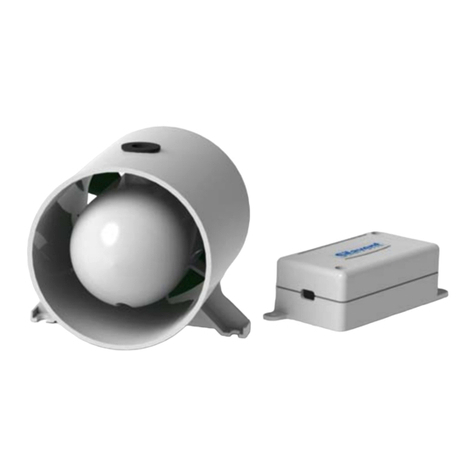
Polypipe
Polypipe Silavent GLA100LV installation instructions

Reece
Reece KADO LUX EXHAUST FAN 250 Technical guide

Home Decorators Collection
Home Decorators Collection ALTURA 68-ATR Use and care guide
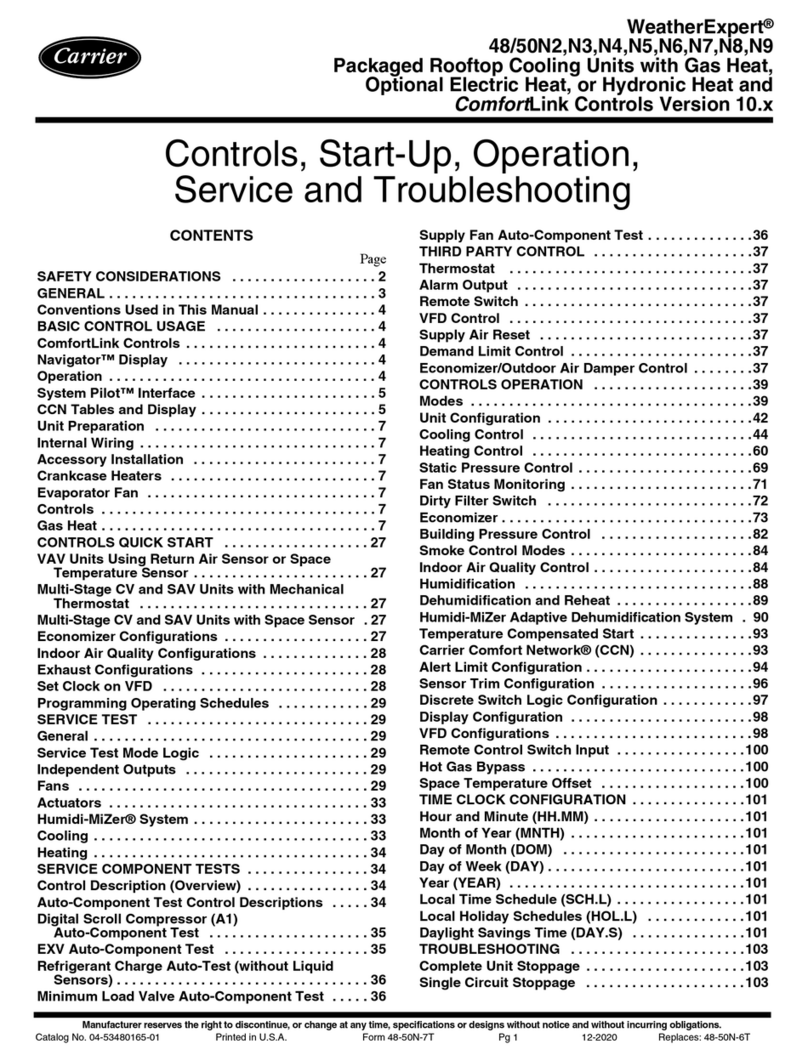
Carrier
Carrier WeatherExpert 48N2 Controls, start-up, operation, service, and troubleshooting
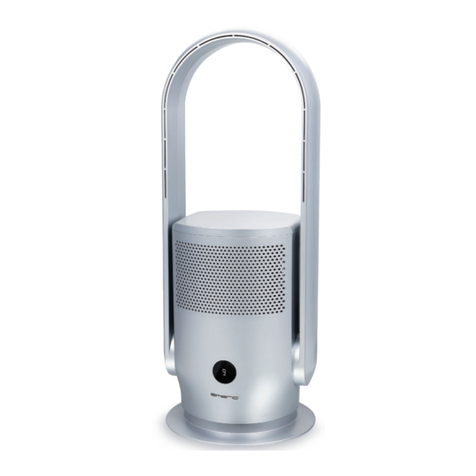
emerio
emerio TFN-214473.4 instruction manual
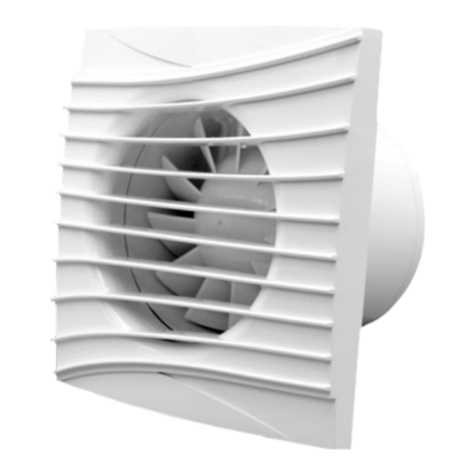
K TECH PRO
K TECH PRO Exklusiv 01 operation instruction

bathstore
bathstore 41800041570 Fixing instructions

bathstore
bathstore Rapide Inline 41800040590 Fixing instructions

Beper
Beper P206VEN230 use instructions
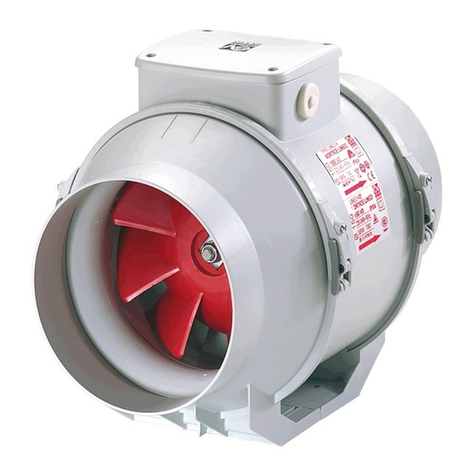
Vortice
Vortice LINEO 100 V0 ES Instruction booklet
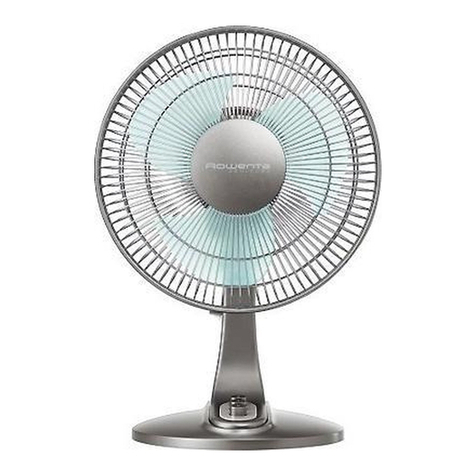
Rowenta
Rowenta Zenitude VU2020F0 Instructions for use

